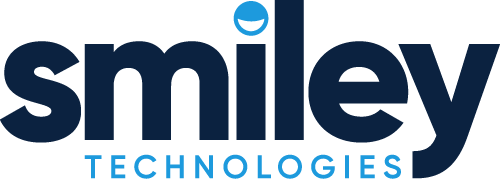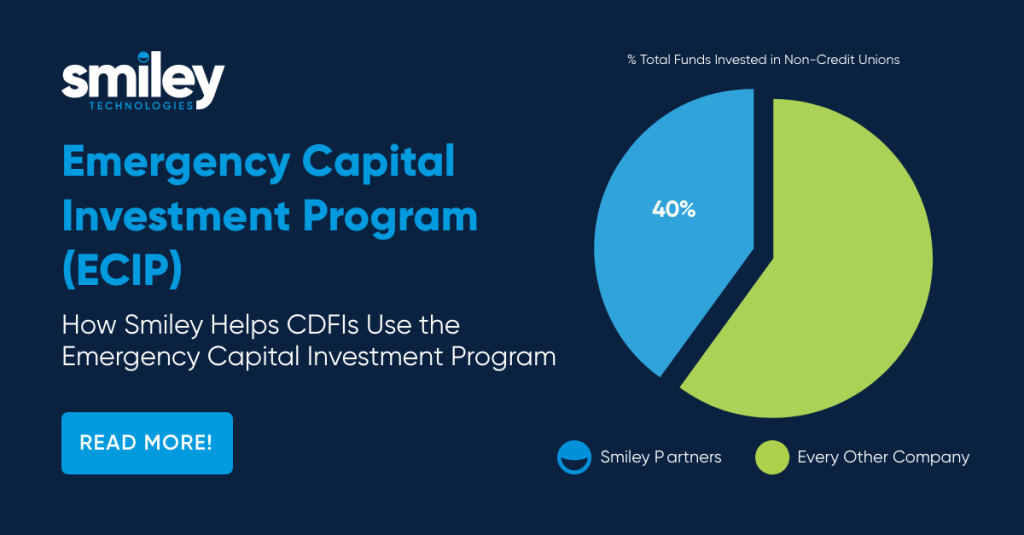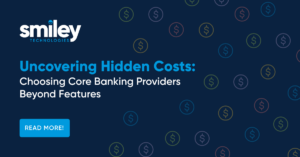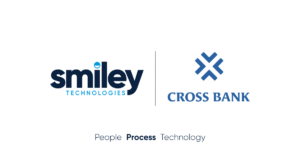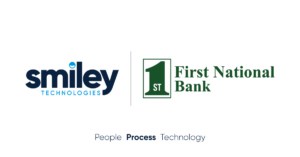The 2021 Consolidated Appropriations Act brought on one of the more impactful programs for community banks in recent memory: the Emergency Capital Investment Program (ECIP). Formed as a response to the COVID-19 crisis, ECIP was built to help the most-impacted communities and businesses through capital investments. It continues to do so to this day.
With small businesses and communities across the United States struggling under the unique circumstances brought on by the pandemic, the Treasury Department established ECIP to encourage low- and moderate-income community financial institutions to enhance their support of small businesses and consumers in their communities.
ECIP allocated $9 billion directly to depository institutions that are certified Community Development Financial Institutions (CDFIs) or minority depository institutions (MDIs). The goal is to help these organizations, who focus primarily on personal lending and business development efforts in low-income underdeveloped communities, channel more capital to the places, projects and people that need it the most. As with any federal program though, the data collection and reporting required by ECIP is very prescriptive and presents another layer of challenge for smaller CDFIs that predominantly work in Excel spreadsheets.
Smiley’s Solution to Reporting Challenges
Smiley Technologies has been working with ECIP recipients since the program launched, helping these institutions realize the program’s benefits while removing the worry of compliance requirements. Smiley has developed reporting tools that have been specifically tailored to ECIP and has grown its network of partners and familiarity with program requirements exponentially.
“We wanted our bank partners to focus on what they do best, deploying capital as fast as they can to the underprivileged in distressed areas throughout the country,” said Chris Raper, Chief Strategy Officer for Smiley. “So we focused on the data and creating a solution that automates their pain points.”
Smiley’s tools automate much of the reporting process, allowing banks to gain insights on their loans and community reach on a daily or weekly basis. This ensures adjustments can be made and strategy altered well before quarterly reports are due to the Treasury.
The Intricacies of Reporting Requirements
Thus far, the Treasury Department has made over $8.38 billion in investments in 170 community financial institutions across the country. Participating institutions are required to submit Quarterly Supplemental Reports (QSR) as well as collect data the Treasury Department can use to assess and evaluate the overall success of the program.
In addition to the QSR, an Initial Supplemental Report (ISR) for certain merger and acquisition transactions is also required. When an ECIP participant merges with or acquires a non-participant, the ISR is then used to adjust the baseline amount of Qualified Lending, defined as lending to credit-worthy borrowers who do not have substantial down payments and reside predominantly in rural communities. In general, the Treasury collects data on Qualified and Deep Impact Lending, defined as lending to low-income borrowers in persistent poverty counties, in order to determine rate reductions in dividend and interest payments.
While the government has detailed the reporting schedules and intricacies publicly, this can be a challenge for smaller organizations that may not be as familiar with the procedures and forms. When submission is required for all participants and the same report schedules are required regardless of institution size, collecting the right data and reporting it can be especially demanding. There are numerous regulations within ECIP and more than a handful of hard deadlines that organizations will need to comply with.
Turning to Smiley
To date, Smiley has partnered with institutions that have accepted $2.5 billion, or 40 percent, of the $6.3 billion that has been allocated to non-credit unions thus far in ECIP. More broadly, Smiley has worked with institutions that make up nearly 30 percent of the total amount dealt out by the Treasury over the course of the program.
When it comes to working with Community Development Financial Institutions, Smiley is more than just a core banking provider. We partner with our customers to make adopting government programs a straightforward and collaborative process. To learn more about the Smiley difference and how we partner with our banking customers to equip them with all the right reporting tools email us at info@sibanking.com.
